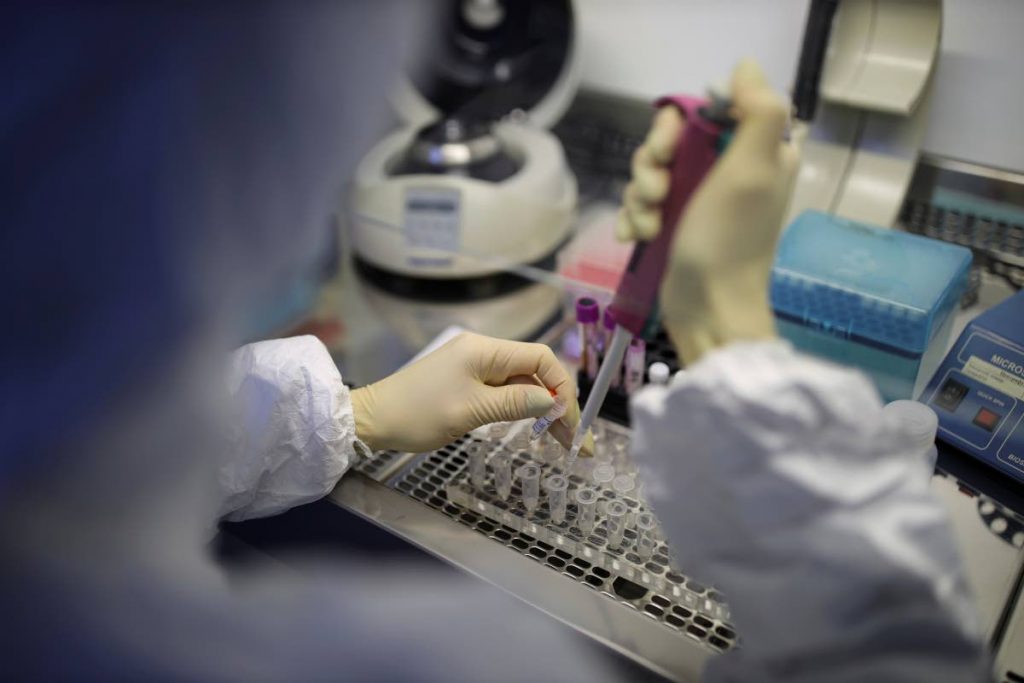Here’s how we beat the coronavirus

kmmpub@gmail.com
How bad will the virus get? Let’s do a quick back-of-the-envelope. We can first assume that cases will double every five days – the doubling rate outside of China, according to World Health Organisation (WHO) Situation Reports. At that rate, 917,504 people in TT – just over 65 per cent of our population – may be infected in the next 85 days.
In China about 15 per cent of infected people needed hospitalisation, and five per cent needed critical care. In TT that works out to 137,626 people needing hospitalisation, of which 45,875 will need critical care and ventilators.
Even with hospital care, at a conservative estimate, about one per cent or 9,175 people would die: that’s 20 years’ worth of murders. Without access to hospital care, and specifically without ventilators, that number could skyrocket.
The nature of exponential growth also means that we won’t see the absolute impact of the doubling rate until the very end. For example, if the virus doubles in the next five days, we will have 14 reported cases. However, if the virus doubles on day 80, it will go from 458,752 to 917,504. The absolute number of cases will be concentrated into a tiny window of time.
This would utterly overwhelm our health services. To put it in perspective, we have about 3,000 hospital beds, which are at almost complete capacity during “peacetime”. Numbers on ventilators are hard to find, but an informal survey of numbers pegs it at around 40 in the whole country. The whole country will be in triage.
To be clear, this is by no means an inevitable scenario. The Government has already acted much faster than many European countries. With swift action we can slow the doubling rate, as China did, to as much as 26 days.
What did China do? The report of the WHO’s Joint Mission to China on covid19 is clear: lock down, test and do everything possible to expand healthcare capacity.
We have already secured our borders and made tough decisions to close schools and discourage non-essential activity.
Mass testing is simply the cheapest and fastest way to map and contain the virus. A significant percentage of people with the virus will have no symptoms. Without mass testing, we will fly blind and our only tools are blanket measures. If there are any lessons so far from China, South Korea and Singapore: it is this. Carpha can currently test 20 a week: this must be increased by a huge order of magnitude. The good news is that one polymerase chain reaction machine can test 3,000 cases a day and costs about US$500,000 million to rent. That is more than worth it. China combined mass testing with contact tracing technology to map the virus and coordinate responses through networked virus command centres. This is something that can be rolled out very quickly.
Third, we must move very quickly. We may not be able to prevent the health system from being overwhelmed, but we can act fast to accelerate capacity.
China quickly used mass investment in specialised and isolated fever clinics, not hesitating to wall off whole hospital blocks. Pre-fabricated models and stadiums were repurposed in weeks to meet the surge in demand. Other countries have drafted final year doctors and retirees. Licence requirements for doctors and nurses should be temporarily waived, and administrative support should be ramped up to support private sector licensing for labs, pharmacies and other health services.
Technology is essential to ramp-up capacity. According to the WHO’s China Mission Head Dr Bruce Aylward: "Someone in one place said 50 per cent of their consultations are now done online; they just moved a whole bunch of what was normally done physically online to be able to keep the regular health services going, prescriptions turned over, et cetera, in a very orderly manner.” Dr Che Bowen’s Jamaica-based MDLink and Dr Alexandra Ames’ in TT have already seen spikes in their tele-health services.
These measures, from testing to hospital expansion to technology will cost money. Beyond the TT$5 billion we need to close the budget gap, we must borrow and spend more – debt to GDP and rating agencies be damned. The Heritage and Stabilisation Fund drawdown in October can be used to repay some of the short-term borrowings. Forgetting other measures: it is totally uncontroversial that we need an emergency health budget now.
The Prime Minister has said he is willing to listen to anybody with constructive solutions. This is a historic time for everyone to step forward and offer innovative ideas in a spirit of solidarity. This crisis can and will bring out the best in us.
Kiran Mathur Mohammed is a social entrepreneur, economist and businessman. He is a former banker, and a graduate of the University of Edinburgh


Comments
"Here’s how we beat the coronavirus"